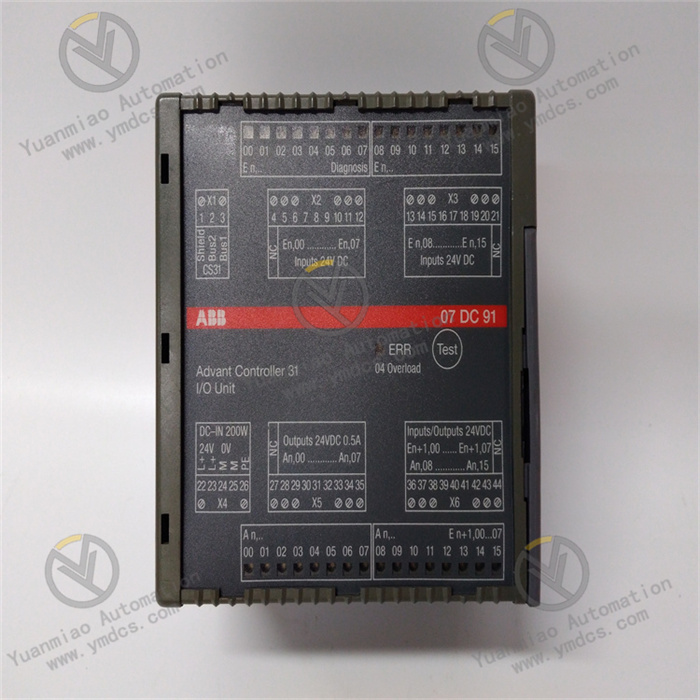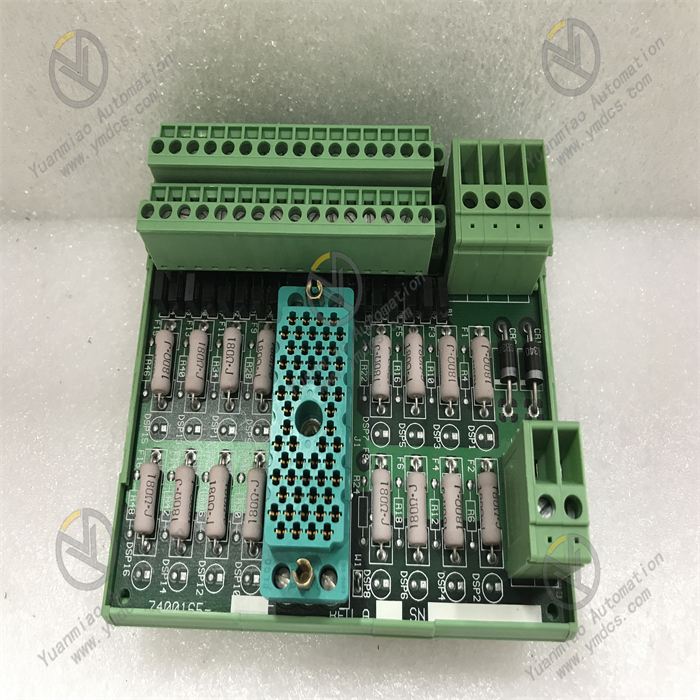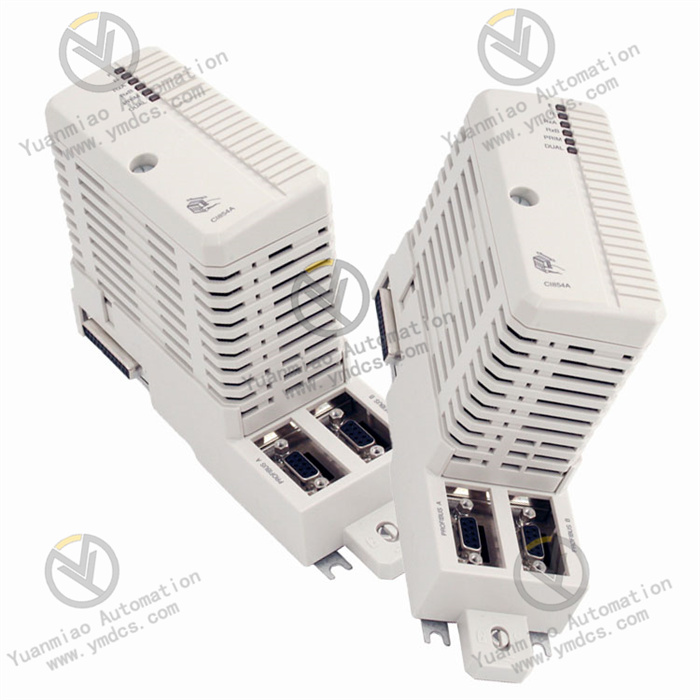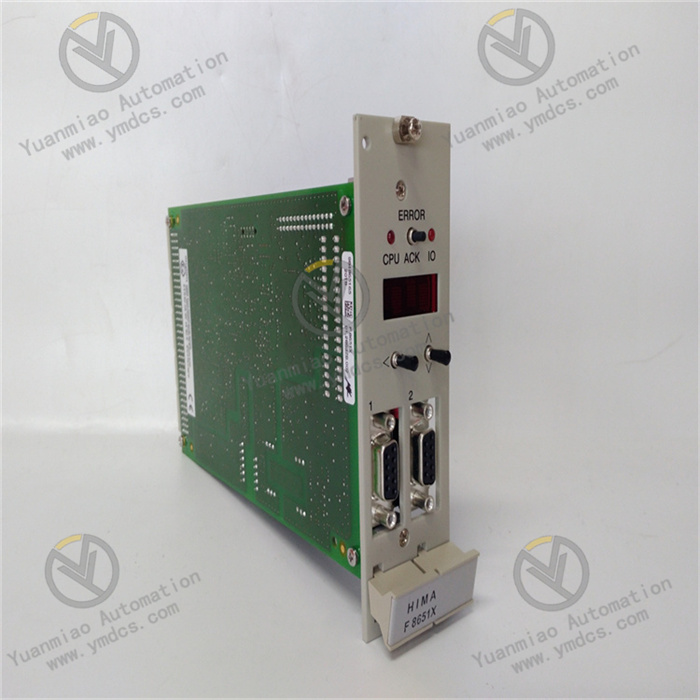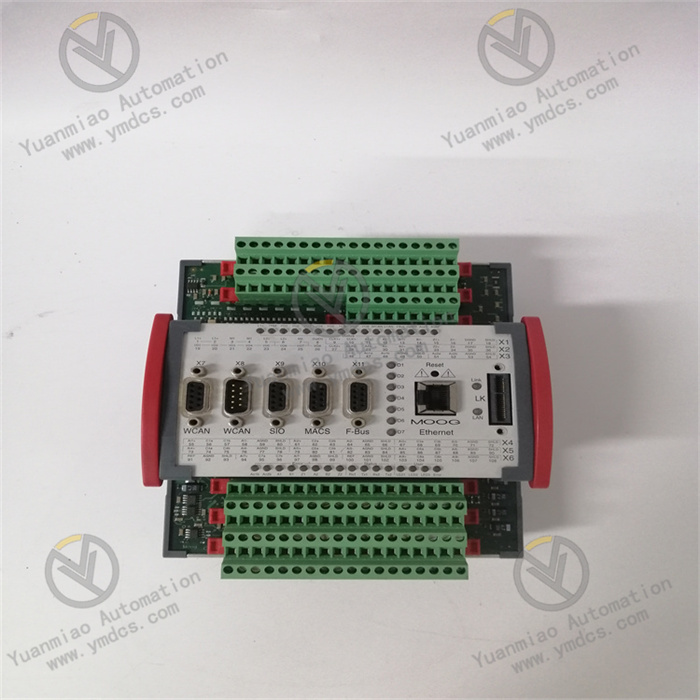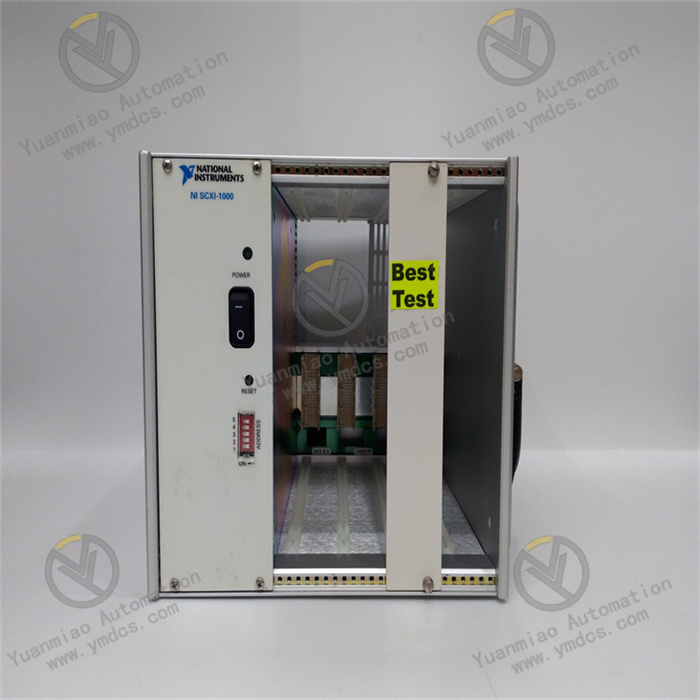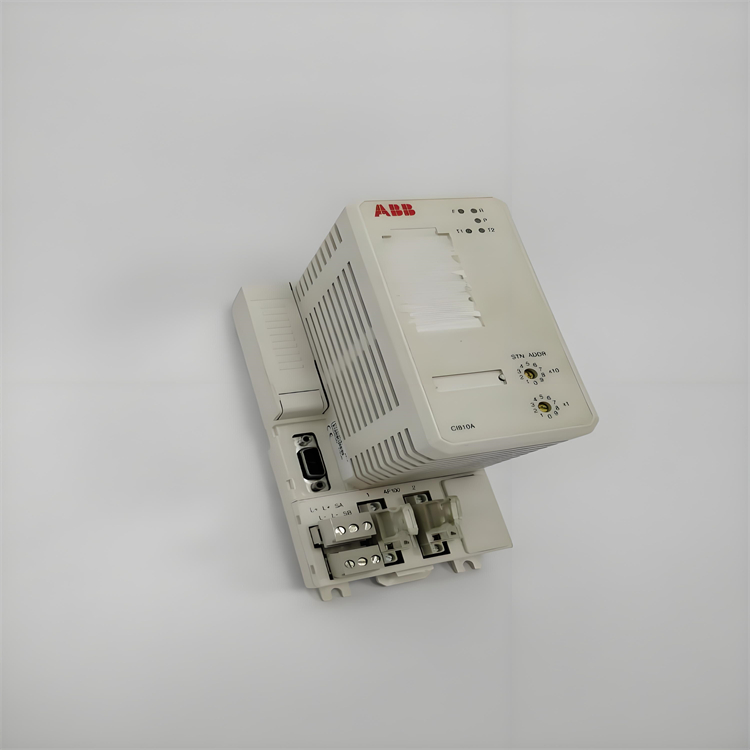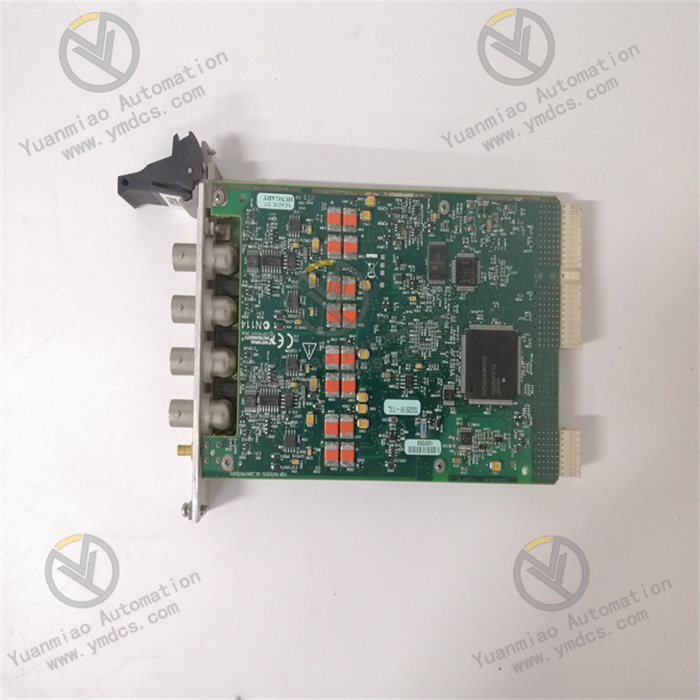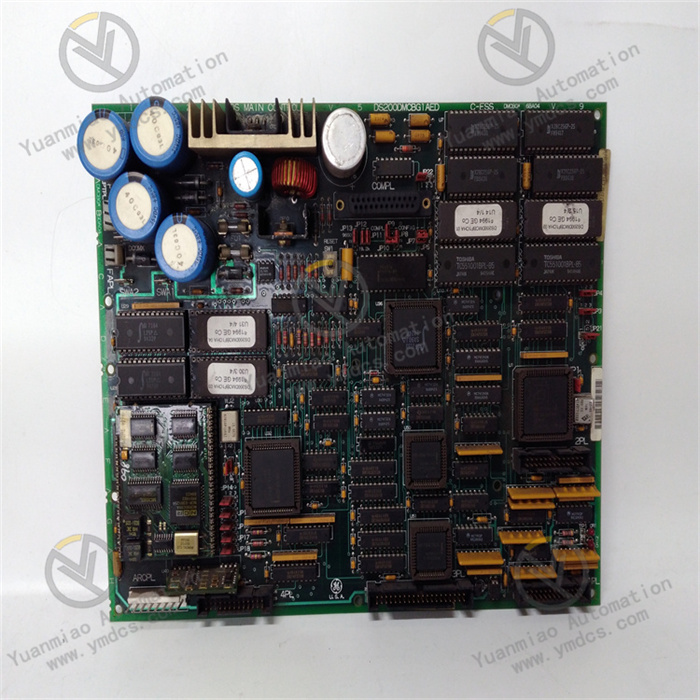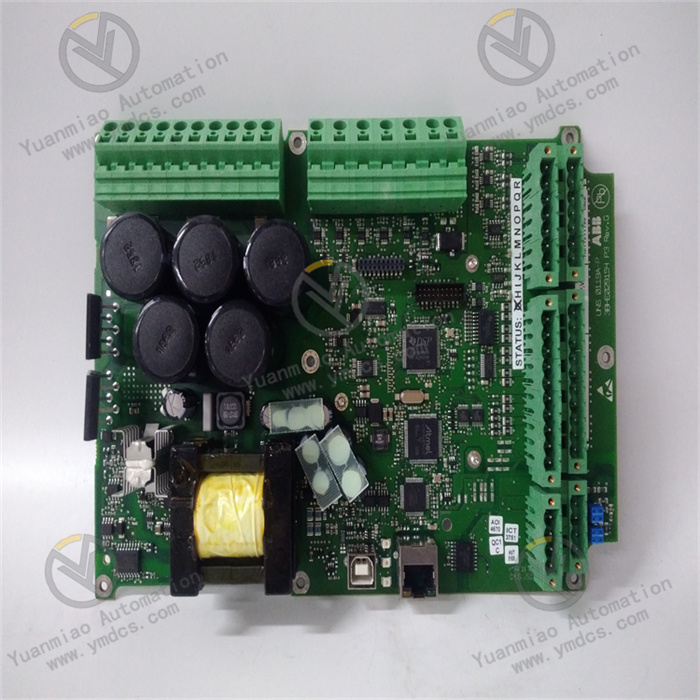Description
ABB 07DC91 GJR5251400R0202
I. Functional Positioning and Application Scenarios
It belongs to the distributed I/O module in ABB's industrial automation control system, mainly used to expand the input/output (I/O) capability of the system, and is compatible with controllers such as Advant Controller 41 series. Typical application scenarios include:
- Process Control Expansion: Increasing analog/digital signal acquisition and control channels in chemical and power industries.
- Equipment Status Monitoring: Accessing sensors (e.g., encoders, proximity switches) and actuators (e.g., solenoid valves) in mechanical manufacturing production lines.
- System Integration: Cascading with PLC and DCS systems to achieve distributed data interaction (e.g., communication via Profibus or Ethernet).
II. Functional Features
1. I/O Channel Configuration and Characteristics
- Analog Input (AI): 8 channels, supporting signal types including 4-20mA, 0-10V, and PT100 thermal resistors, with 12-bit accuracy and electrical isolation (anti-interference).
- Analog Output (AO): 4 channels, outputting 4-20mA or 0-10V, supporting loads ≤500Ω, and capable of driving devices such as control valves and frequency converters.
- Digital Input/Output (DI/DO): 8 channels each. DI supports 24V DC level detection, and DO is relay output (250V AC/2A), suitable for switching control (e.g., motor start/stop).
2. Communication and Compatibility
- Standard with RS-485 (Modbus RTU) interface, optional Profibus DP or Ethernet interface for communication with main controllers or host computers (e.g., ABB Freelance).
- Supports hot-swapping, facilitating module replacement during system operation to reduce downtime.
3. Reliability Design
- Wide Temperature Operation: -25°C to +60°C, adapting to high or low-temperature industrial environments (e.g., boiler rooms, cold storage workshops).
- Electrical Isolation: Isolation voltage ≥2500V AC between I/O channels and CPU, resistant to electromagnetic interference (compliant with EN 61000 standards).
- Redundancy Support: Optional dual-power modules (24V DC redundant power supply) to enhance system stability.
III. Technical Parameters
| Parameter Type | Specific Indicators |
|---|---|
| Processor | 16-bit microprocessor, 16MHz (optimized for I/O data processing efficiency) |
| Memory | 2MB program memory, 1MB data memory (supports basic control logic and real-time data storage) |
| Analog Input | 8 channels, 12-bit accuracy, supporting 4-20mA/0-10V/PT100, input impedance ≥100kΩ |
| Analog Output | 4 channels, 12-bit accuracy, 4-20mA/0-10V, maximum load 500Ω |
| Digital Input/Output | DI: 8 channels (24V DC, response time ≤5ms); DO: 8 channels (relay, 250V AC/2A) |
| Communication Interfaces | Standard RS-485 (Modbus RTU), optional Profibus DP or 10/100Mbps Ethernet |
| Power Supply | 24V DC (±15%), power consumption ≤10W |
| Mechanical Characteristics | Dimensions: 170mm×100mm×70mm, weight: 0.6kg |
| Protection Level | IP20 (indoor use), compliant with CE and UL certifications |
IV. Working Principle
1. Signal Processing Flow
- Input Stage: AI channels convert sensor signals (e.g., 4-20mA from pressure transmitters) into digital quantities through conditioning circuits (amplification, filtering); DI channels detect switch states (e.g., limit switch on/off).
- Calculation and Output Stage: The module receives commands from the main controller, outputs analog signals via AO (e.g., controlling valve opening) or drives relays via DO (e.g., starting/stopping pumps).
- Communication Interaction: Real-time data exchange with the main controller via RS-485 or Profibus (e.g., uploading sensor values, receiving control commands).
2. System Integration Mode
- As a distributed I/O module, it can be cascaded on the expansion bus of the main controller (e.g., ABB 07CR41), supporting up to 128 I/O points expansion.
- Supports communication with third-party devices (e.g., connecting intelligent instruments via Modbus) to enhance system compatibility.
V. Troubleshooting Guide
1. Abnormal I/O Signals
- Phenomenon: Significant deviation between AI display values and actual sensors; DO relays do not actuate.
- Troubleshooting:
- Measure sensor outputs (e.g., 4-20mA signals) with a multimeter to confirm if cables are short-circuited/open.
- Check if I/O channels are enabled in the module configuration software and if parameters (e.g., signal type, range) are correct.
- For DO channels, manually short the output terminals. If the actuator acts, the relay contacts are damaged (replace the module).
2. Communication Interruption
- Phenomenon: The main controller cannot read module data, and the communication indicator (COM LED) is off or flashes abnormally.
- Troubleshooting:
- Check communication cables (e.g., if RS-485 wires are reversed, whether the shield is grounded).
- Confirm that communication parameters (baud rate, parity) match the main controller (e.g., Modbus set to 9600bps/8N1).
- Replace the communication interface module or restart the system to eliminate temporary faults.
3. Power Failure
- Phenomenon: Power indicator (POWER LED) is off, and the module is unresponsive.
- Troubleshooting:
- Measure the voltage at the power terminals to ensure it is within 20.4-27.6V DC, and check for loose cable connections.
- For redundant power configurations, confirm if the backup power 切入 after disconnecting the main power to determine if the power module is faulty.
VI. Typical Application Cases
1. Metallurgical Furnace Temperature Monitoring System
- Access K-type thermocouples via AI channels to collect furnace temperature data in real time; AO outputs 4-20mA signals to control heating power; DI monitors the status of cooling fans, and DO 联动 alarm devices (relays actuate to light alarm lights when overheated).
2. Food Filling Line Automation
- DI accesses photoelectric sensors (detecting bottle positions), and DO controls filling valve switching; AI collects pressure sensor signals (monitoring filling pressure), communicates with PLC via Profibus to achieve precise control of filling volume and upload data to the central control system.
VII. Comparison with Similar Products (vs ABB 07DC90)
| Parameter Dimension | ABB 07DC90 | ABB 07DC91 |
|---|---|---|
| Analog Input Channels | 4 channels (only supports 4-20mA/0-10V) | 8 channels (additionally supports PT100) |
| Communication Interfaces | Standard RS-485 (no Profibus option) | Optional Profibus DP interface |
| Memory Capacity | 1MB program + 0.5MB data | 2MB program + 1MB data (larger storage) |
| Application Scenarios | Small I/O expansion (≤32 points) | Medium systems (supports more channels and protocols) |


